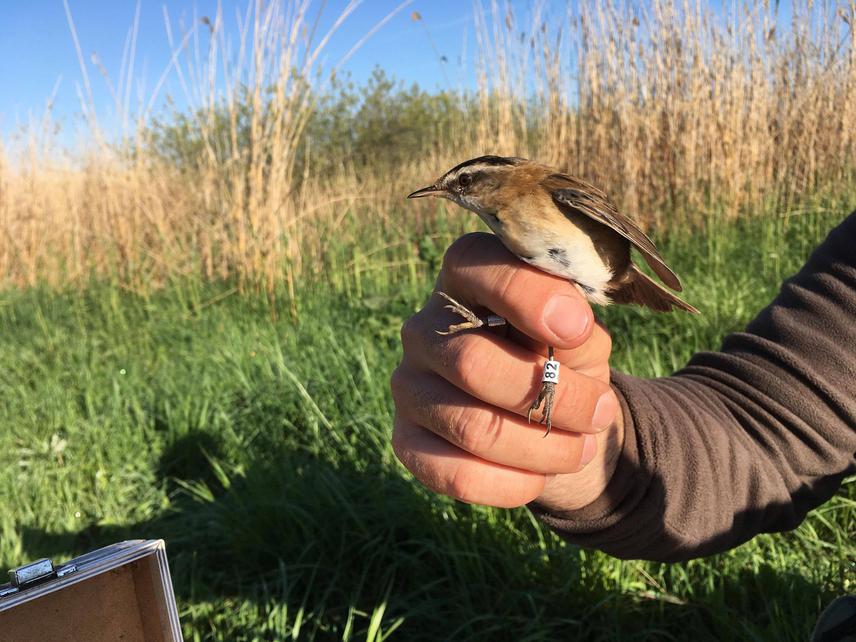Thomas Oliver Mérő
We plan to assess the distribution and population size of the reed-bed inhabiting Moustached Warbler (Acrocephalus melanopogon), a Natura 2000 priority species, in northern Serbia. In order to understand habitat and conservation requirements we will take biometric measurements of captured individuals and measure habitat structure variables. We plan to construct artificial nesting sites to facilitate the increase of the small regional population. Based on the outcomes, we will provide conservation recommendations and publish our results in official data-bases and scientific journals. Our result will help to facilitate the process in this species for Natura 2000 sites in Serbia in the near future. Finally, we will educate citizens in schools, and via printed material and media.

Wetlands inhabit disproportionally large number of species, and therefore can be considered as biodiversity hotspots. In the past century the numbers and surface of freshwater wetlands decreased considerably. In this project we plan to monitor, estimate population size and habitat requirements in the Moustached Warbler (Acrocephalus melanopogon) a priority species of Natura 2000 sites. The study will take place in northern Serbia.
We plan to survey potential reed-beds suitable for Moustached Warbler during April and May 2018 and 2019, in the period when breeding individuals occupy reed-beds. With a GPS device we will record all territories found, where we plan to take the following habitat structure variables at random or near nests if found: water depth, fluctuation of water level, reed density, reed height, recording the number of reed generations. We attempt to capture all possible territorial adults (males and females) by using mist nets and play-back song of males. In every individual we will measure biometric parameters. These parameters will provide us information what habitat requirements are preferred by this species in this region, and may help us suggesting clearer conservation recommendations and actions.
Using all collected data we will estimate the density of breeding territories for reed-beds and for the entire study area. By using these new population data we will be able to compare these with those regions where regular monitoring is present, and based on foreign experiences we may suggest conservation implications. Coordinates of territories will be imported to GIS, and interactive maps will be constructed for better understanding of the spatial distribution of the species. Results will be published in scientific papers, and data will be available on our website. Furthermore, we plan to held sessions in schools for educational purposes. In media and in brochures, we plan to inform the citizens in local and in region about the project and its relevance.
This project will provide new insight on the distribution range and on the estimated size of the Serbian population of the Moustached Warbler. By creating artificial nesting sites we aim to provide new nesting opportunities and increase the breeding population. Based on our results we will develop a plan of the most suitable conservation actions to ensure the suitability of habitats for Moustached Warblers. Finally, this work can significantly influence the selection of Natura 2000 areas in Serbia that will happen in the nearest future.